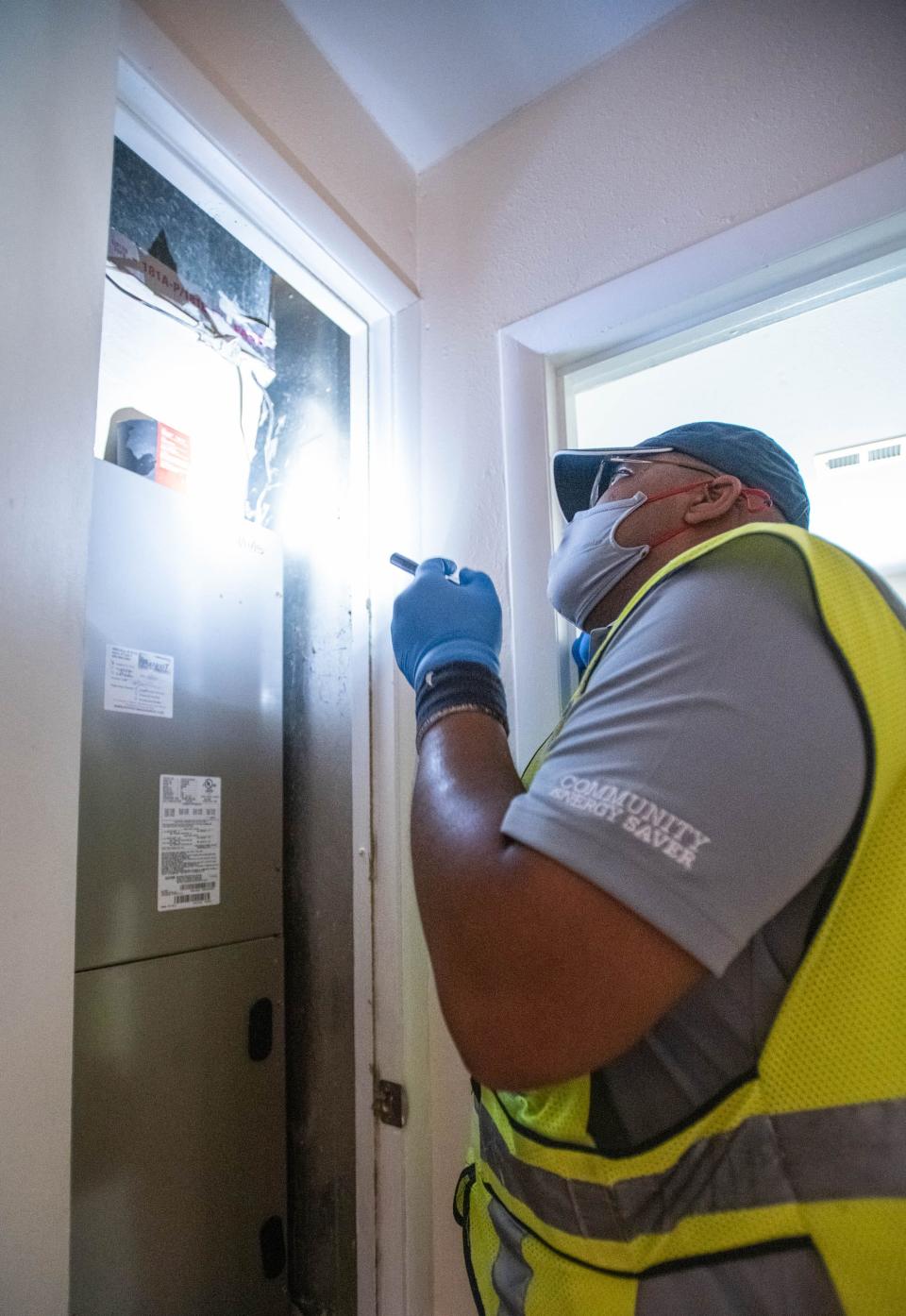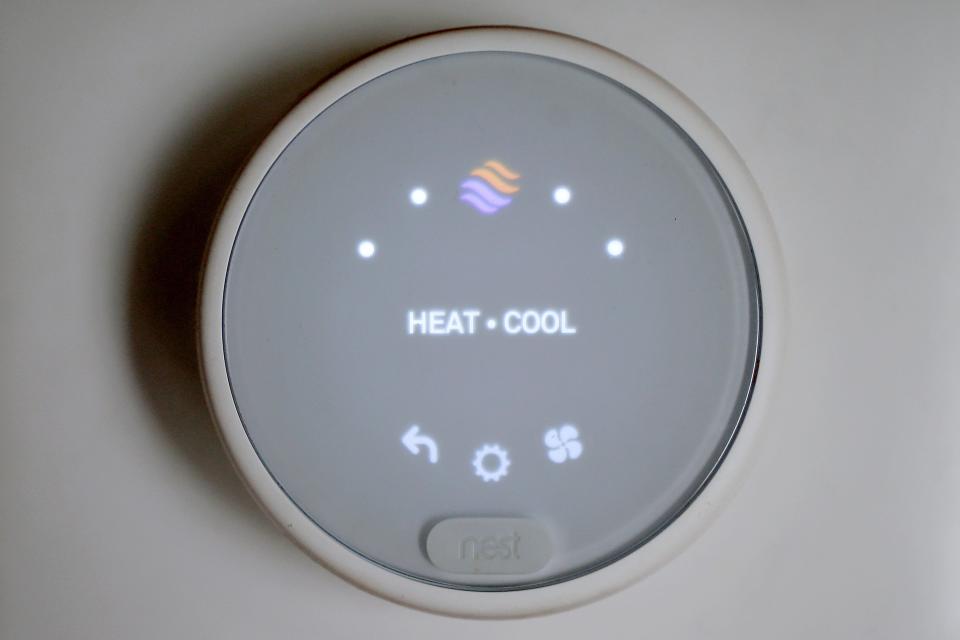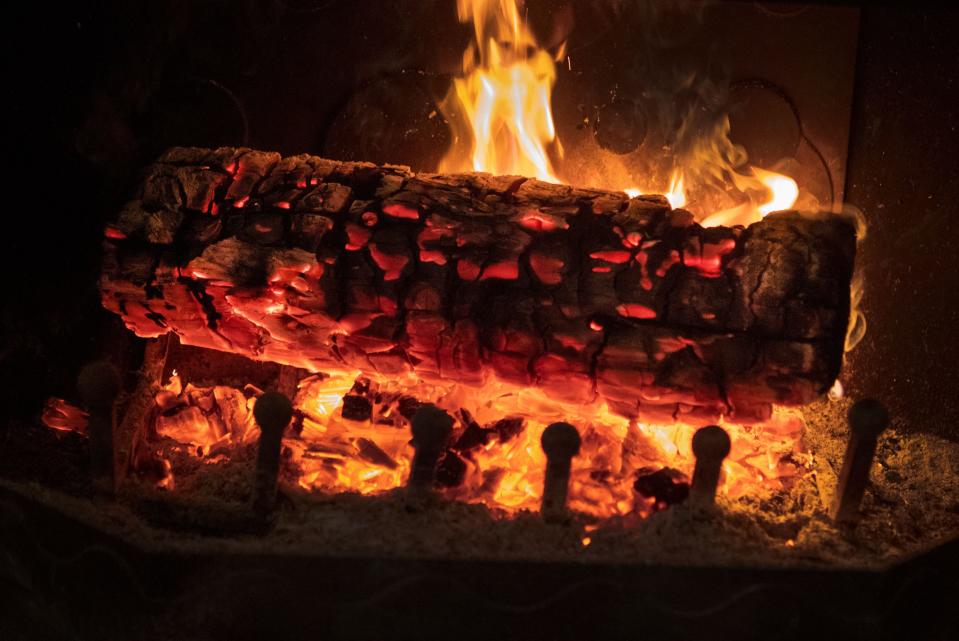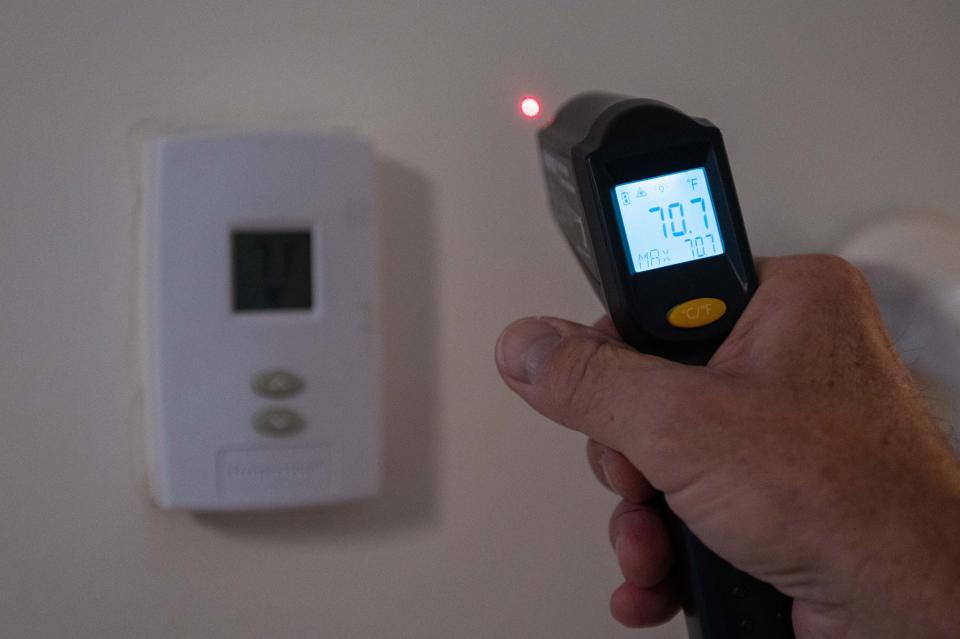When the dreaded cold months of winter arrive, it means many homeowners are put in a difficult conundrum to keep their homes warm without breaking the bank.
And staying warm is becoming increasingly expensive.
The average cost of home heating is projected to remain at near record levels this winter after increases of an estimated 17.2% last year, according to the National Energy Assistance Directors' Association. The organization released a report in September finding that the average American household is expected to pay anywhere from $787 to $2,094 in heating costs between October and March.
But resourceful homeowners can find plenty of ways to cut down on costs.
Here are some tips from experts on how to stay warm this winter while still reducing your heating bills.
What is solar winter? What to know about the darkest time of year
Have your heating unit inspected before winter

A heating system that's running efficiently saves money.
That means, the pricey cost of paying for a professional to come to your home and inspect your unit (anywhere from $150 to $500, Consumer Reports estimates) can pay off in the long run.
Climate-friendly heat pumps, for instance, can use up to 25% less fuel when they're well-maintained, according to the U.S. Department of Energy.
Inspections include replacing dirty filters and checking for safety issues like carbon monoxide leaks.
Set your thermostat to 68 degrees
Unless you live alone, you've probably engaged in thermostat wars with a loved one or roommate who simply prefers to keep your residence at a different temperature. But experts have helpful recommendations for the proper home temperature in the winter.
That magic number? 68 degrees Fahrenheit, according to the Department of Energy.
But if that's too specific, anywhere around 70 degrees is a good target when it gets cold, Ram Narayanamurthy, deputy director of the U.S. Department of Energy's Building Technologies Office, told USA TODAY.
“A home that’s at 70 degrees is quite comfortable,” Narayanamurthy said.
Turn the heat down when you're away
While 70 degrees is the ideal number, it's unwise to set your thermostat to one temperature and never change it. Lower temperatures may be ideal when sleeping at night or when you're away from your home, Narayanamurthy cautioned.
Narayanamurthy said he usually sets his at 64 degrees if he leaves his home for an extended period of time, though everyone's comfort levels may be different.
“You don’t want your heater turning on all the time when no one’s at home,” he said.
Don't set your thermostat too low
Penny-pinchers may be tempted to set their thermostat at bracing levels and survive the winter by bundling up in layers or piling on blankets.
While you'd have to set your home at a pretty low temperature for it to become a health risk, Narayanamurthy warns against going below 60 degrees.
“You have to keep it really low to really get into a health concern," he said. "What you want to do is keep it at a reasonable temperature that’s not chilly.”
The World Health Organization recommends keeping indoor temperatures between 64 and 75 degrees for healthy people. But for those who are very young, elderly or who have health problems, the minimum temperature shouldn't dip below 68 degrees, the organization says.
Is Toys R Us back? Toys R Us comeback continues with store opening inside Mall of America
Consider investing in a 'smart' thermostat

Smart thermostats enabled with Wi-Fi are becoming increasingly popular among many Americans, especially those who have replaced their furnace in recent years, Narayanamurthy said.
In fact, he estimated that up to 33% of households now have them.
Because many can connect to smartphones via mobiles apps, smart thermostats provide the option for homeowners to program their thermostat while they're away from home or even set a schedule.
Some advanced options are capable of recognizing a homeowner's pattern and adjusting the temperatures at certain times or even in certain rooms of the house.
The average Energy Star certified smart thermostat can save about 8% of a homeowner's annual heating and cooling bills, according to Consumer Reports.
"There’s a proven energy savings from a smart thermostat,” Narayanamurthy said. “The aim is to make it more seamless to make your home more comfortable.”
Space heaters can help, but use with caution
Many homeowners may be tempted to rely on fireplaces, space heaters, electric blankets and wood burning stoves to keep warm in the winter.
According to Direct Energy, these types of secondary heating sources can help to slash costs since they offer heating to a more targeted area of your home at a fraction of the cost of cranking up the thermostat.

But many of these options come with their own safety risks and similarly require routine maintenance, care and even replacement.
Once a fire hazard, modern electric space heaters are much safer than they used to be with built-in safety features that turn the heaters off if they tip over, overheat, or have been left turned on for too long.
Get an energy efficient audit
An energy efficient audit could be a great way for homeowners to find where their homes heating and cooling efficiency is lacking, Narayanamurthy said.
Trained energy assessors can evaluate homes for issues like insufficient insulation or a heating system that might warrant replacement and then develop a plan for homeowners to address issues and lower energy bills.
The Home Performance with Energy Star program, a collaboration between the Department of Energy and and the Environmental Protection Agency, matches consumers in 20 states with reputable home performance contractors for assessments.

Check for tax incentives and rebates
If this all still sounds expensive, Narayanamurthy recommends you consider taking advantage of available rebates and tax credits through the Department of Energy.
Due to the recently approved Inflation Reduction Act, now may be a great time to install energy efficient products and replace heating systems that are 15 years old or older. Funding is available for all kinds of other upgrades as well, from doors, to windows, and to insulation. More information is available at energysaver.gov.
More steps to take to lower your heating costs
Experts offer a variety of other tips that, altogether, could cut down on cold air coming into your home and reduce the workload on your heating unit.
-
Weather-stripping doors and improving insulation helps to keep warm are in and cold air out.
-
Draft air coming in through windows may mean they're in need of maintenance - or replacement altogether. But before getting new windows, homeowners can try to caulk them to prevent air leaks. If replacements are needed, Consumer Reporters recommends considering low-emissivity (low-e) storm windows, which are coated to help keep the warmth inside.
-
Cold air creeping in at the bottom of doors? A lengthy draft stopper (or even a rolled-up towel) is an inexpensive way seal it off.
Eric Lagatta covers breaking and trending news for USA TODAY. Reach him at elagatta@gannett.com
This article originally appeared on USA TODAY: What to set your thermostat to, more tips to reduce your heating bills
Article From & Read More ( What to set your thermostat to in the winter, more tips to lower your heating bills - Yahoo Finance )https://ift.tt/0HZDLoS
Tidak ada komentar:
Posting Komentar